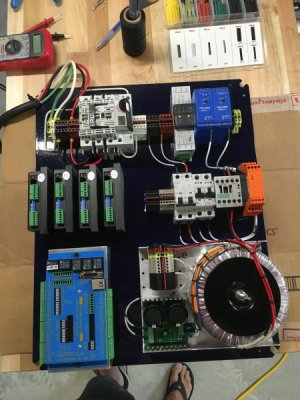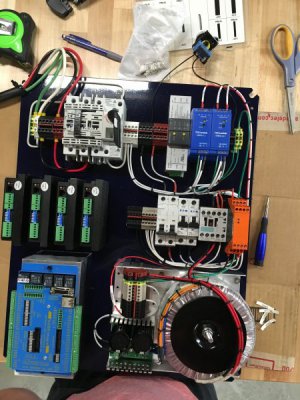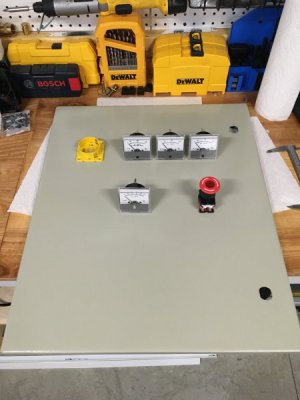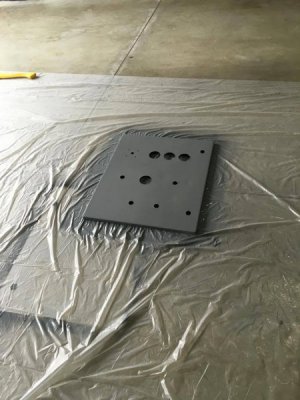I have never built a CNC machine, and it has been years (10+) since I have played around with one. I'm 30, and I am a Flight Engineer / Pilot (not an EE, I don't do industrial automation for work, etc.).
I grew up around airplanes, and I may have a few engineering courses under my belt. The machine is in the drafting phase, and the electronics (the heart) are starting to come together.
System voltage input: 240VAC split phase
Control/Safety Voltage: 120VAC, 24VDC
Motion Control Voltage: 5VDC
Stepper Voltage: 65VDC
Motion Control: Hicon Integra 6-axis motion controller
Stepper Drivers x4: Kelling KL8056
Currently planning Nema23 425oz-in 8 wire Steppers (on hand) - not 100% sure this will be sufficient for all axis.
Safety: Dold Safety Relay (controls main contactor)
-E-stop
-Start/Stop switches
The Teaser:
(Shop Approved footwear?)
I grew up around airplanes, and I may have a few engineering courses under my belt. The machine is in the drafting phase, and the electronics (the heart) are starting to come together.
System voltage input: 240VAC split phase
Control/Safety Voltage: 120VAC, 24VDC
Motion Control Voltage: 5VDC
Stepper Voltage: 65VDC
Motion Control: Hicon Integra 6-axis motion controller
Stepper Drivers x4: Kelling KL8056
Currently planning Nema23 425oz-in 8 wire Steppers (on hand) - not 100% sure this will be sufficient for all axis.
Safety: Dold Safety Relay (controls main contactor)
-E-stop
-Start/Stop switches
The Teaser:

(Shop Approved footwear?)
Last edited:

 Looking forward to watching your build.
Looking forward to watching your build.

